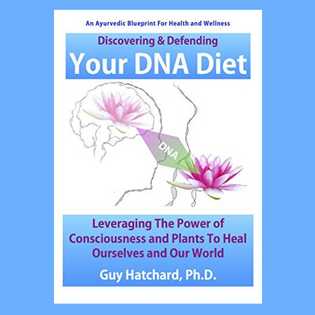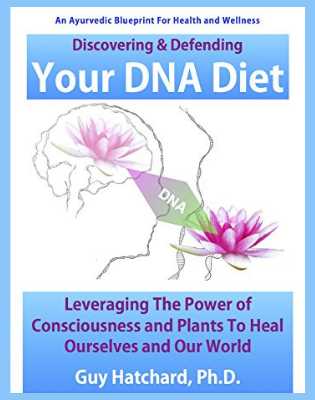1. DNA is a ‘part and whole’ system.
The DNA is in every cell, but also coordinates the physiology as a ‘whole system’ mirroring our sense of Self as a unique whole person. If you are using lego there are individual blocks which fit with one another, but to create something sophisticated you need an overall plan. This same organisational system known as non-locality is found throughout nature.
2. Non-Locality
Crystal growth in nature was formerly understood as a purely local or ‘on-site’ process where a limited number of shapes can only be joined in specific ways like lego blocks, these repeated patterns then generate the exterior crystal shape; but in 1974 physicist Roger Penrose discovered a pseudo five-fold symmetry which was later found in an aluminium manganese crystal alloy.
This crystal has a non-repeating pattern which can only grow if the local pieces have a knowledge of a complex global structure, as in a jigsaw. The specific rules governing the behaviour and orientation of incoming atomic groups in the crystal formation process have to be non-local or holistic. Penrose has since formulated a notion of space-time in which each local region has encoded or enfolded some aspect of a more general order.
3. DNA is embedded in quantum reality
The experimental findings of quantum physicists indicate that such non-local or holistic laws are fundamental to physical reality. As we move towards smaller time and distance scales from the surface of our perception towards molecules and atoms and beyond we find connections that transcend time and space.
Sitting at the interface between the quantum world and the physical world, DNA is a molecule that partakes of both. Every part of the DNA is connected to every other part which is why one part of the DNA molecule cannot be edited without affecting its whole function. In this sense DNA is not only a collection of linear sets of instructions, it is also self-interacting. It’s most sophisticated functions which support human development rely on the self-interacting connections within the DNA molecule.
4. DNA is the most protected level of the physiology
DNA sits at the heart of levels of protection embodied in the physiology. It is analogous to the commader sitting in the middle of a walled city. The city is under constant seige but the defenders at its walls are constantly protecting its gates and fending off unwanted attackers. Everyone wanting to enter has to be carefully vetted.
The digestive system ultimately transforms food into useful biologic components while the lymphocytes, T-cells and antibodies etc. protect against unwanted viruses and other invaders. The insertion of genetic material directly into the body via injection amounts to a breach in these defences.
Similar to the effect of a Trojan Horse admitted inside the city gates where it can cause havoc. Worse can happen when a foreign agent gains the confidence of the king and directs his actions as Wormtongue did to King Theoden. The insertion of DNA directly into the cell nucleus can and does cause unforeseen disruptions to the functioning of the physiology as a whole.
5. Our DNA is constantly being repaired
In every cell the DNA needs to be repaired as much as 70,000 times a day to protect it from damage such as that caused by oxidation. The physiology is set up to keep the integrity of DNA sequences intact at all cost. DNA is the blueprint of life. The higher functioning of life, our consciousness, depends upon it.

6. DNA functions in tandem with the Epigenetic environment
You have probably heard the term epigenetics, it is the study of all factors outside of the DNA molecule which affect its structure and function. The factors affecting our health range from the abstract field of consciousness through the physical fields and matter particles, the elements, molecular aggregation of elements, the complex DNA molecule, biochemical messengers, proteins, metabolic macromolecules, cellular components, cells, organs, organ systems, the physiology as a whole, our food, the air we breathe, the near environment including the epigenetic environment, our home, our family, our society, our world, and even the distant reaches of the universe.
We are even now beginning to understand that there is an epigenetic environment whereby the integrity of the human genome is supported by the wider genetic environment of micro-organisms, plants and animals, and even ancestral experiences.
7. DNA’s co-evolutionary relationship with the food environment
Our immune system, guided by the intelligent network of the DNA contained in every cell and functioning as a whole, is constantly fighting off challenges to the order, integrity, and longevity of the physiology. The success of the DNA in not only preserving life but supervising its evolution and adaptation comes down to its stable relationship with its environment of food and other experiences.
Climate, mineral and chemical composition of soil, water, and air, plant-based DNA, social interactions, internal electro-magnetic fields, etc are all important players in the epigenetic web which protects our species. Our digestion and metabolism has evolved by processing a finite set of foods based on DNA.
It is important to realise that for millions of years, this has been a relatively stable and finite set. Our physiology has not so much learned to cope with a finite set of compounds, but it has actually come into existence in tandem with this finite, limited set of specific compounds.
Any radical change in this finite set, such as the catastrophic climatic changes in prehistoric times, did and can lead to the destruction of entire species. Aside from our own consciousness, the critical element in this finite set is the DNA itself.
All of our traditional food sources have been intimately linked to and derived from DNA. Our survival and evolution over millions of years has been possible because of, has been designed by, is constituted entirely of an interlocking biological web of genetic structures centred on the DNA molecule which is shared by micro-organisms, insects, plants, animals, and humans.
Now in the modern era, we have passed through the nineteenth, twentieth, and into the twenty-first century, a tiny fraction of the 4.85 billion years of earth’s existence, and witnessed a sea change in our epigenetic environment. The discovery and deployment of a wide range of novel compounds, chemicals, and biochemicals in food, air, soil, and water is threatening to overwhelm the delicate balance between the second law of thermodynamics and the biology of living systems. And this deployment of chemical compounds is accelerating rapidly.
We are subjecting ourselves to dietary components never before seen in history that are not derived from natural living systems capable of defying the second law of thermodynamics, but rather sterile chemicals or worse man-made genetic mimicry.
Compounds that are not part of our evolutionary history and never have been. Compounds that our physiology, our digestion, and our metabolism are not adapted to. We are ingesting them through the food we eat, the liquids we drink, the air we breathe, the space we live in, the injections we receive, and the experiences we have.
At the present time, we are being exposed to an additional 2000 novel chemicals each year which are being approved by lax government regulators. As a result, we are creating a health crisis of such proportions that we are sowing the seeds of our own destruction.
Your DNA Diet
To find out more Guy Hatchard Ph.D., former senior manager at Genetic ID, a global food testing and certification company, has written a book Discovering and Defending Your DNA Diet.





